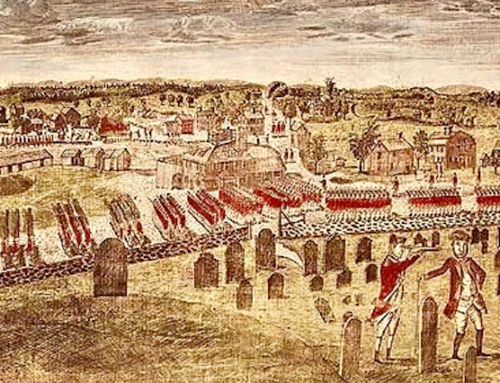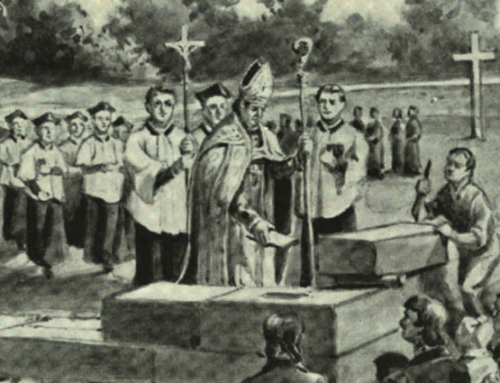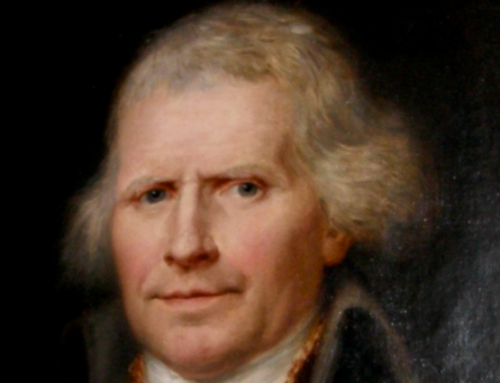James Madison has long been treated as a neutral authority on early American history, a kind of Great Sage of, among other things, the U.S. Constitution. Thus, in a notable book on the ratification campaign of 1787-90—during which the states agreed to live under the Philadelphia Convention’s handiwork—a prominent historian said that the best way to begin to learn about the Revolutionary period was by reading James Madison’s mail.
There have been numerous books taking as their points of departure various of Madison’s accounts of things. Despite the fact that other delegates kept partial notes of the Philadelphia Convention, for example, certain works have relied exclusively on his.
Besides that, virtually all historians treat The Federalist, of which Madison was co-author, as a neutral account of the Articles of Confederation. While one recent book demonstrated that the states contributed more to the Confederation government than a rational-choice model would have led one to predict, Publius’s claims that the states were willfully falling short of their duty to contribute to the Confederation coffers appear in history after history. So too the assertion that prominent Anti-Federalists wanted to break up the Union has been used to besmirch various prominent men of that appellation—never mind that there is not one shred of evidence that Patrick Henry, George Clinton, Rawlins Lowndes, or Willie Jones wanted an independent Virginia, New York, South Carolina, or North Carolina. It must be true: The Federalist said so.
Followers of Harry Jaffa have even picked up an idea that Madison tossed off in a private letter to Jefferson thirty years after the fact in support of the idea that the Declaration of Independence somehow underlay the Constitution—even though there is not one word in, say, the three volumes (2,000 pages) of The Documentary History of the Ratification of the Constitution devoted to Virginia showing that anyone ever mentioned that idea in the most pivotal state. It’s true because, in retirement and in private, Madison said so.
Perhaps the best-written Madison book of all, Drew McCoy’s The Last of the Fathers: James Madison and the Republican Legacy, applied this same mode of argument—a Madisonian ipse dixit is to be accepted without question—in lieu of proof regarding the chief point at issue therein: That Madison, in retirement, correctly contrasted the Virginia and Kentucky Resolutions of 1798 and 1799 and Virginia Report of 1800 to the South Carolina Nullifiers’ argument of 1832-33. As John C. Calhoun’s chief opponent, President Andrew Jackson, called Nullification “the Virginia Doctrine,” one might have thought that more was required.
The widespread phenomenon of taking Madison’s word for things underlies new books on the Early Republic, constitutionalism, Jeffersonianism, and Madison appearing on a regular basis. My own book-length attack on this lazy habit received positive reviews both popular and academic, but it needs reinforcement. And here we have it in the most powerful possible form: A distinguished law professor, Dr. Mary Sarah Bilder of Boston College Law School, weighs in to show that from the summer of 1787 virtually to his death, Madison revised his notes of the Philadelphia Convention. To what ends? Partisan political and personal ones.
Madison’s Hand is not a book for a lay audience. A reader would not be well advised to turn to it for an introduction to Madison’s life, the Philadelphia Convention, the Constitution, or any other subject. It is, instead, a kind of biography of Madison’s notes, and thus may be of note to people with special interest in them. They will learn that the great document, stored in a refrigerated chamber of the Library of Congress among national treasures, is very much unlike what the myth, the scholarly conceit, says it is: It is not entirely the contemporary account made by Virginia Delegate James Madison from the best seat in that Philadelphia room in the summer of 1787.
Richard Beeman of the University of Pennsylvania, a prominent expert in the field, states on the book’s dust jacket that every historian who has ever written on this subject has relied on Madison’s notes. That is not quite true, however: John Taylor of Caroline’s New Views of the Constitution of the United States (1823), which appeared before Madison’s notes were published, relied on an Antifederalist delegate’s notes and on the Convention’s official journal. Max Farrand’s four-volume edition of all the surviving notes and correspondence of the Convention delegates, as well as the journal, includes both, and historians prior to Dr. Bilder have had to make sense of instances at which other delegates’ notes differed from Madison’s. Typically, they have simply assumed Madison was right where the substance was at variance.
In James Madison and the Making of America, I relied on other delegates’ notes where, as in saying the Virginia Plan was introduced on the first day of the Convention with a claim that a “national” government was needed, they foreshadowed later Philadelphia Convention discussions. My choice seemed especially easy where the differences among different delegates’ accounts might well be explained by a decision on Madison’s part that in light of his trouble with other Jeffersonians after 1787, he would scrub language that might make clear where he had acted against what came to be stock Jeffersonian principles. As I put it at the end of the book, he wanted to have been Jeffersonian—or at least to be remembered as having been Jeffersonian—even when he had not been.
Professor Dr. Bilder has done the first intensive study of the actual paper on which Madison’s notes are written, Madison’s handwriting in different parts of the notes, and other aspects of the actual physical artifacts. She holds that Madison revised and revised and revised.
This discovery, she makes clear, is not all so nefarious as it might at first seem. Madison did not realize as he positioned himself in the front of the room in Independence Hall on that late May day that what he then undertook to create would be “Madison’s Notes” any more than, say, William Marbury knew in filing for a writ of mandamus against Secretary of State Madison that he was initiating the famous Marbury v. Madison or the widow Martha Dandridge Custis knew she was marrying the world-historic George Washington. Dr. Bilder asserts—though I do not think she ever quite proves—that Madison first intended simply to keep a record of events that might be informative to his good friend and ally Thomas Jefferson, away in France serving as American minister at the time. Only as the ratification campaign unfolded and the party battles of the 1790s developed did he recognize the use to which his notes might be put.
Dr. Bilder does identify places at which Madison seems to have interlineated speeches into the text. Her speculations on his reasons for doing so strike me as plausible. As I showed in an essay years ago, recollection of the Philadelphia Convention was not the only context in which he engaged in such behavior: His famous Virginia Report of 1800 arguably represents not merely an explanation but a significant moderation of the Virginia Resolutions of 1798. But here we are on ground only experts have occupied.
Many scholars, particularly in law schools, exaggerate the notes’ significance. Dr. Bilder is one of them. She says at one point that Jefferson did not in the 1790s recognize the change that the Philadelphia Convention had made. Here she elides the role of the ratification conventions. According to the Article VII process, it was they that made the change from the Articles of Confederation to the Constitution. The Philadelphia Convention, in a constitutional sense, did not do anything. Its handiwork left the Philadelphia Constitution a mere proposal, soon to be forwarded to the states without endorsement by the Confederation Congress. Thus, knowing exactly what was said and how it was meant behind the closed doors of the Philadelphia Convention is not so important as Dr. Bilder would have it be.
Conservative legal scholars, in particular, commonly treat the deliberations in Philadelphia as containing a gnostic truth of which the non-Framers among the ratifiers were woefully unaware when they ratified the Constitution. In other words, initiates such as Madison had a special insider knowledge the rubes could only wish they had shared: Madison knew Constitutional Truth. Thus, a recent Weekly Standard essay on what Madison would think of Donald Trump reflects the view that James Madison’s private opinions have the kind of authority in politics that the Epistles of St. Paul have among Christians. And thus law school courses are devoted entirely to the records of the Philadelphia Convention.
Fortunately, Dr. Bilder’s book will seriously complicate the Philadelphia Convention cult’s enterprise. Perhaps new attention will be paid to the ratification conventions as a result.








Points well taken. The founding was, for the most part, a political event, undertaken by men with political ambitions and who were (at least some of them) ruthless. Especially Jefferson. (We will have to leave a discussion of Burr for another time). But Madison is right there, as well.
Washington, however, remains special. Really without comparison. That is another unique aspect of the founding.
Much reading to be done, and continued. Great piece.